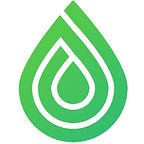1 in 3 people do not have access to clean water.
When I work from home, I fill up my giant Nalgene bottle to the brim with water from my tap. I am too impatient to use my Brita filter and fill it back up again. Where I work, my colleagues and I joke that it takes 20 minutes to fill our bottles, so I meander over to the sink and open the spigot in full force. Let’s face it, I have to run to my next Zoom meeting, I can’t just sit around and wait for my bottle to fill to the top.
I have an American water bias.
So how did I understand the importance of clean water if I live with such bias?
It took traveling to many countries over the years for the idea of “bad water” to truly sink in. As an American, brief stints to other parts of the world just cause several days of “don’t drink from the sink!” reminders but don’t serve as more than a temporary inconvenience. I even worked on a greywater recovery project for several months in Thailand and I still didn’t feel the true issues behind unsafe water.
In 2017, a good friend of mine came back from Haiti, where she was testing environmental water for cholera alongside a lab called the Emerging Pathogens Institute. I assumed that the water they tested would be filled with trash and debris. Curious to learn more, she showed me pictures of crystal clear streams and small waterfalls — all that tested positive for the cholera bacteria. It started to sink in.
300+ customer discovery interviews later, trips to Haiti, Bangladesh, and Kenya, and learning about waterborne pathogen testing started to remove my bias. The resource I take for granted everyday is one that so many others don’t have access to.
Understanding that water is life.
When the implications of bad water finally sunk in, I realized that my company, OmniVis, could use our technical expertise to do something about these issues. Diseases like cholera, E. coli, typhoid, and Legionella come from bad water. Being a biomedical engineer and mechanical engineer, I worked with my team to develop our handheld device, the iSpyDx, to detect these dangerous pathogens in the environment. We make a really impactful solution that can concentrate and detect waterborne microbes in under 30 minutes, directly at the source. And we’ve had the opportunity to test our device with samples as complex as wastewater.
American water bias has the people around me asking “why” I would detect bad microbes in the water instead of downstream when a patient is already sick. I understand why they ask — the USA focuses on diagnostics in a clinical setting. In the USA, accessing bad water is rarely a matter of life or death, but that’s not the case in most of the world, where access to clinics isn’t so ubiquitous.
Americans haven’t had to live a life where we don’t have access to clean water. It’s traveling to areas and experiencing what it’s like to live without good water that shows us that we need to detect early. Early detection allows us to treat the water before we access it.
Water is essential.
OmniVis wants to grow our team so we can expand our testing platform and access more water sources, and therefore more communities, worldwide. Water impacts all of us, in every single industry. I am still working on my American water bias.
How have you come to appreciate clean water?
Written by Katherine Clayton, PhD
